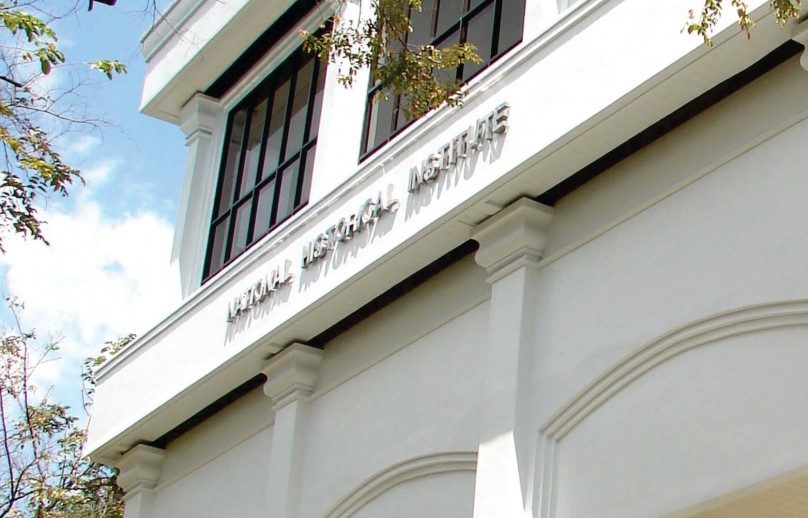Citing their presumed important cultural property (PICP) status under the heritage law, the National Historical Commission of the Philippines (NHCP) has warned two local governments not to pursue the redevelopment of their respective cemeteries.
These are the city governments of Lucena for Lumang Sementeryo located at Barangay Ibabang Dupay, and Malabon for Tugatog Cemetery in Barangay Tugatog.
In identical letters to Lucena Mayor Roderick Alcala and Malabon Mayor Antolin Oreta III in November, NHCP Chair Rene Escalante reminded them that structures dating at least 50 years old “can be considered as Important Cultural Property and must be protected from any modification or demolition.”
Escalante also said in the letters that “cemeteries are repositories of artistic and architectural structures of different periods such as niches, epitaphs, statuaries, mausoleums, monuments and other artifacts, with historical and cultural value.”
He directed both local governments not to do any work on the cemeteries until a development plan is submitted to the commission for its approval.
Petition
The Lucena issue was brought to the attention of the National Commission for Culture and the Arts (NCCA) in early November by Advocates for Heritage Preservation member and Lucena resident Maurice Joseph Almadrones, who, together with 18 other residents, wrote a petition to Alcala on Nov. 15, asking if the heritage law was considered in the redevelopment plan.
They also asked, among others, for a dialogue with Alcala to discuss the appropriate conservation approaches on the protection of the heritage cemetery.
The redevelopment plan was first conceived in 2016, Lifestyle learned.
“We were surprised and saddened that many graves were already opened and the remains exhumed because of unverified information that these will be demolished due to the planned redevelopment,” notes the letter-petition to the mayor.
The petitioners also said that “we are not against the renovation of our old cemetery and were hoping that this will indeed be renovated for it to be spacious, solemn, more respectable, more accessible to seniors and persons with disabilities, and for this to be a unique place to feature our heritage and history, and for it to be a place where people would learn of important personalities that helped shaped and develop our city, culture and society.”
They asked the local government to first consult stakeholders, national cultural agencies and heritage specialists so that heritage structures inside the cemetery are protected.
These include a number of Art Deco and neoclassical graves as well as the ruins of its neo-Gothic mortuary chapel.
One striking tomb inside the cemetery is the 1932 grave of coconut plantation owner Mauro Salvacion. This grave features three nude figures of farmers with an angel at their backs attributed by architect Joel Rico to American-era Italian sculptor Franceso Riccardo Monti.
In a post on the Facebook page Art Deco Philippines, advocate Isidra Reyes said the tomb was designed by architect Andres Luna de San Pedro, Juan Luna’s son, who also designed a number of houses in Quezon province, and Legarda Elementary School in Sampaloc and San Vicente de Paul Church in Ermita, both in Manila, among other important works.
Almadrones and company also asked the mayor to preserve the heritage trees located inside the cemetery.
Malabon
In Malabon, a concerned citizen wrote the NCCA in October, calling its attention to the local government’s redevelopment plan, and asking the former if the important tombs and mausoleums would be protected and incorporated into the new development.
That letter was forwarded to the NHCP, which resulted in the letter to Oreta.
The cemetery is famed for the unusual statue of the “Tugatog Devil” resting on top of the grave of Don Simeon Bernardo, who died in 1934.
This statue of a devil trampling St. Michael allegedly connotes the widespread presence of evil in this world, and has recently been taken down.
Apart from this, Tugatog Cemetery is home to early 20th-century tombs and mausoleums of illustrious families and noted personalities.
These include Florentino Cayco, founder of the Arellano University, the industrialist Marcelo family, former Mayor Eleuterio de Jesus, 19th-century nobleman Don Simeon Blas and local Robin Hood Ben Tumbling, among others.
In a recent development, Konseho ng Herencia ng Lucena, a local heritage group, will partner with the local government on the preservation of the old tombs, while the local government of Malabon is yet to issue a statement.
Iloilo issues
In the province of Iloilo, the NHCP issued a cease-and-desist order (CDO) against the redevelopment of the Dingle municipal plaza as the plans submitted by the local government “do not conform to the overall architectural character that the St. John the Baptist parish church represents as a built heritage.” Furthermore, the CDO signed by Escalante states that the NHCP declared Spanish- and American-period plazas as national historic sites in 2018, thus protected from modification or alteration.
On Nov. 22, the NHCP, through Escalante, sent a letter to the Department of Public Works and Highways (DPWH) Iloilo Second Engineering District engineer Sanny Boy Oropel, warning him not to undertake any work or changes in the area where two Japanese pillboxes, or tochikas, are located until a development plan is approved, since these are PICPs under the heritage law. The letter was issued following reports that the DPWH will have a road widening in Janiuay town, where the two pillboxes at both ends of the old American-era bridge spanning Suage River are located.
“The Japanese pillboxes must be preserved, since these are the remaining heritage structures built during World War II in Janiuay, Iloilo,” notes the NHCP letter.
However, while the pillboxes still stand to this day, the American-era bridge, partly damaged by Supertyphoon “Yolanda” (international name: Haiyan) in 2013, was recently demolished to the dismay of heritage advocates and despite DPWH orders on the protection of heritage structures. —CONTRIBUTED









































